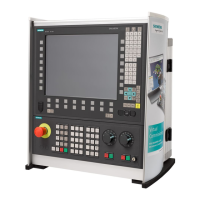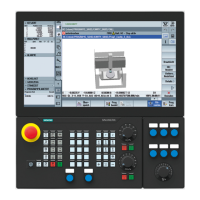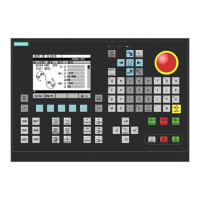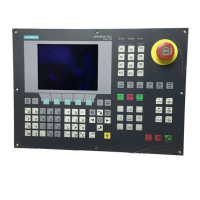Detailed Description
2.6 Referencing with absolute value encoders
Reference Point Approach (R1)
2-30 Function Manual, 08/2005 Edition, 6FC5397-0BP10-0BA0
Adjustment methods
The following adjustment methods are supported:
• Adjustment by entering a reference point offset
• Adjustment by entering a reference point value
• Automatic adjustment with probe
• Adjustment with BERO
Readjustment
Readjustment of the absolute encoder is required after:
• Gear change between load and absolute encoder
• Removal/installation of the absolute value encoder
• Removal/installation of the motor with the absolute value encoder
• SRAM data loss of the NC
• Battery failure
• Function: PRESET
Warning
The NC automatically resets the status of the absolute encoder to 0 = "Encoder not
adjusted" only when there is a gear change:
MD34210 $MA_ENC_REFP_STATE = 0
In all other cases, it is the sole responsibility of the user to indicate the unadjusted state
of the absolute encoder to the NC by manually resetting the status to 0 = "Encoder not
adjusted" and to repeat the adjustment.
Warning
Data backup
When machine data of Machine A are backed up, the encoder status:
MD34210 $MA_ENC_REFP_STATE (status of absolute encoder)
of the machine axes is also backed up.
When this data block is loaded into machine B of the same type, e.g., as part of a series
start-up or after servicing, the NC automatically regards the machine axes in question as
adjusted/referenced. It is therefore the special responsibility of the machine
manufacturer/user to perform a readjustment.
See the description of machine data element:
MD30250 $MA_ACT_POS_ABS (absolute encoder position at switch-off time)
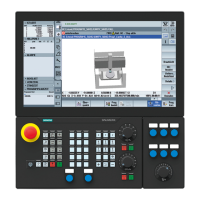
